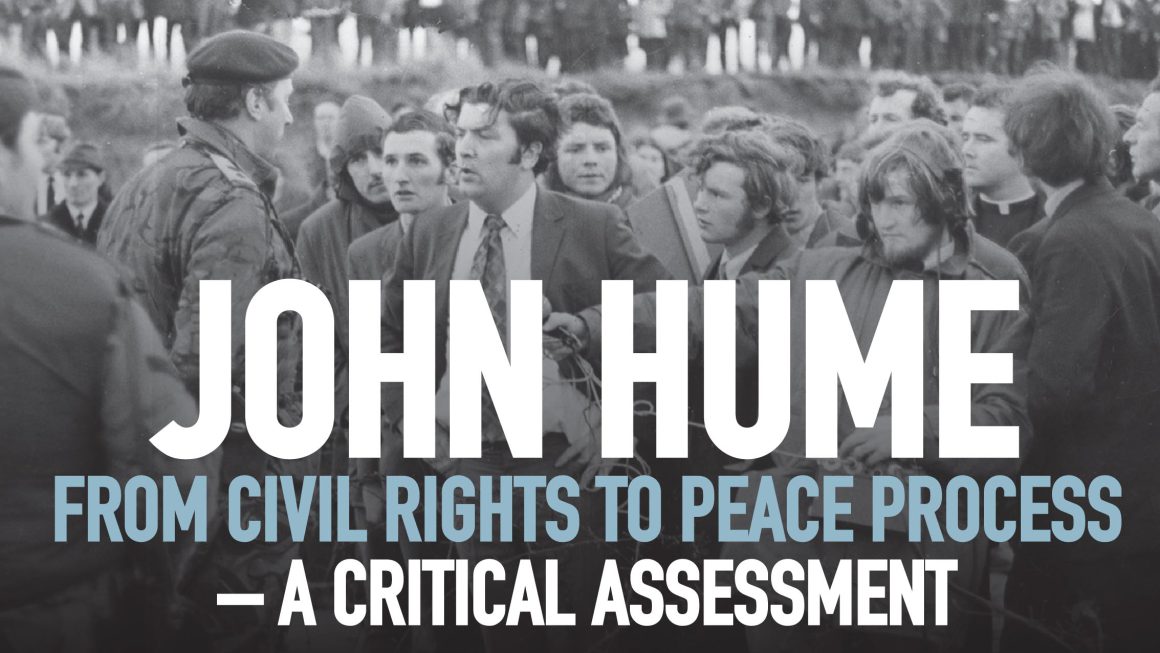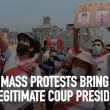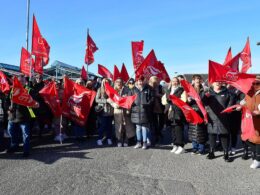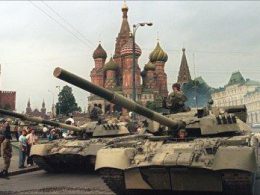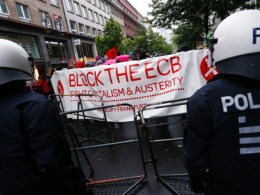On 3 August, John Hume, former leader of the nationalist SDLP, passed away at the age of 83. He was eulogised by establishment figures in the North – including Unionists – as well as in the South, Britain and internationally. His passing was also met with genuine expressions of respect from the mass of ordinary people in Northern Ireland, among Catholics but also in the Protestant community.
This reflects his association in popular consciousness with opposition to paramilitarism and sectarian violence; with the civil rights movement of the 1960s and ‘70s; and his role in the ‘peace process’ which led to the paramilitary ceasefires of 1994 and the signing of the Good Friday Agreement in 1998, for which he was awarded the Nobel Peace Prize. DANIEL WALDRON looks back at these historic turning points and critically assesses the roles of the forces at play, including that of John Hume and his co-thinkers.
The 1960s saw the relative tranquility of the first four decades of the Northern state undermined. The sectarian patterns of life began to break down, with a coming together of the two communities in housing developments and new industries. An upturn in industrial struggle brought together workers from across the sectarian divide and strengthened the trade unions, with the development of a powerful layer of shop-floor activists. Young people were being radicalised by international events, from the black civil rights movement in the US to the revolutionary upheaval of May 1968 in France. Growing support for socialist ideas found its expression partly in the growth of the Northern Ireland Labour Party (NILP), which won over 25% of the vote in the 1962 Stormont election compared, for example, to the conservative Nationalist Party’s 15%.
Civil rights movement emerges
It was in this context that the civil rights movement erupted in the last years of the decade. Its central focus was the disenfranchisement and discrimination faced by the Catholic community. Since the state’s foundation, the Unionist Party had held hegemonic power at Stormont, but also used gerrymandering and class-based electoral discrimination to control councils even in predominantly Catholic areas. Discrimination against Catholics in jobs and housing was a stark reality, although poverty and dire living conditions were also the reality for the mass of Protestant workers. This inequality was not simply motivated by bigotry, but was a calculated measure by the Unionist establishment to frame the political status quo around sectarian rather than class division.
Democratic demands for the ending of this discrimination were central to the civil rights movement as it emerged. However, from the outset, there were divergent tendencies within the movement. On the left were those who saw united class struggle as the means to win fundamental change, and therefore recognised the need to reach out to the Protestant working class, linking the question of ending sectarian discrimination with economic and social demands to improve the lives of all workers. On the right were those who sought to limit the scope of the movement to minimal democratic demands, eschewing class and struggle and the prospect of fundamental change in the interests of all-class ‘anti-Unionist’ – i.e. Catholic – unity. The question of which tendency would come to dominate would shape the course of history – whether socialist change or sectarian reaction would win out.
Derry was to become an epicentre of the new movement, given the blatant disenfranchisement of the majority Catholic community, the atrocious housing conditions and the particularly high levels of unemployment in the city. A third of men in Derry were unemployed in 1968, with low-paid women shirt factory workers often the key bread-winners in a household. Here, the left wing of the movement was spearheaded by the Derry Labour Party and the Derry Housing Action Committee.
October 1968 – historic turning point
It was these forces which initiated what was to be an historic civil rights march on 5th October 1968 around slogans such as ‘Class, not creed’, ‘Working class, unite and fight’ and ‘Orange and Green Tories, Out!’ John Hume – then a teacher, who had risen to prominence in the campaign for a university in the city – refused to sign the police notification of the march or to have anything to do with it.
The march was banned and the crowd of around 400 which took part was subjected to brutal attacks from the Royal Ulster Constabulary, being baton charged repeatedly as they made their way into the city centre. Images of the police assault on peaceful protesters were broadcast into homes across the North and much further afield, and acted as a catalyst for profound upheaval. In the aftermath, broad layers of the Catholic population were brought into political activity for the first time. In the Protestant community, many were horrified by what they saw, with an important section of Protestant youth also beginning to move into active opposition to the Unionist administration.
In the tumult which followed the march, ‘moderate’ figures quickly stepped in to head off the potential for the left to seize the initiative. A Citizens’ Action Committee (CAC) was formed, dominated by middle-class figures who had had nothing to do with the initial march. John Hume was elected secretary. Eamonn McCann – then a leading figure in Derry Labour Party – initially and correctly refused to join the new body, which he described as “middle-aged, middle-class and middle of the road.”
Quelling radical action
The CAC’s first action was to delay a planned follow-up march the next week and instead opt for a sit-down protest at the Guildhall two weeks later. Speaking from the platform, Hume made clear his vision for the civil rights movement: “The civil rights movement was not out to unite Ireland or the working classes. It was a movement without any political aims. Civil rights is not a political issue. It is a moral issue.”
The role of the CAC was to try to put a lid on the spontaneous explosion of protest from below which emerged in the city after 5th October, diverting it into safe, apolitical channels when necessary. A follow-up demonstration called by the CAC on 16th November attracted 15,000 – reflecting the awakening which had taken place – but the organisers insisted it be silent and without political demands. Immediately following this rally, the CAC called for an end to spontaneous protests.
Indeed, it would take every opportunity to try to quell political action – for example, suspending protests for a month in response to Unionist Prime Minister Terence O’Neill’s promise of some gradual, piecemeal reforms – and only returning to the streets when the pressure from below was such that to do otherwise would mean being bypassed. As civil rights marches again began to clash with state forces and Ian Paisley’s loyalist reactionaries, John Hume would describe them as a “becoming a distraction” from the aims of the movement.
SDLP founded
Following his election to the Stormont parliament as a ‘civil rights independent’ in February 1969, Hume resigned his position in the CAC, a sign of his orientation towards winning limited legislative reforms rather than fundamental change from below. In 1970, Hume would help to found the Social Democratic & Labour Party – its name reflecting the support for socialist ideas at the time rather than the party’s real character. From the outset, it styled itself as a ‘party for the minority’ – i.e., Catholics – and was dominated by ‘moderate’ middle-class nationalists. It was formed in large part from the rump of the old discredited Nationalist Party but also involved some figures previously associated with the labour movement – notably Paddy Devlin and Gerry Fitt, both of whom would leave at different points arguing the party wasn’t socialist in character, Fitt after being replaced by Hume as leader.
At the same time as the Catholic population was moving into collision with the state, significant sections of Protestant workers were engaged in strikes and protests in opposition to the bosses but also against the Unionist administration, in defence of jobs, for decent pay and so on. If the workers’ movement – particularly the trade unions and the NILP – had taken the lead independently, these two strands of opposition could have been tied together around a programme of socialist demands, challenging not just discrimination but the entire sectarian status quo and the capitalist system itself.
“Broad unity on a limited programme”
While significant sections of the ranks of the movement – as in Derry Labour Party – were striving in this direction, the leadership refused to take up the challenge. The conservative right were, at best, paralysed by the upheaval taking place, hiding themselves away; at worst, they lined up behind the Unionist administration in defence of “law and order”.
Even some nominally on the left of the workers’ movement failed at this crucial juncture. The Communist Party argued for the trade unions to fall in behind the idea of “broad unity on a limited programme”, saying that “at this stage of the fight, the ‘Green Tories’ (ie, right-wing nationalists) are necessary allies.” This meant sacrificing working-class unity for unity with the likes of Austin Currie who – when presenting himself for selection as a candidate in Fermanagh & South Tyrone – said, “I am not in favour of a mad socialist. The selected candidate must be sound on the border issue.”
The mass of Protestant workers initially had a ‘wait and see’ attitude towards the civil rights movement. However, as its demands became narrowed and conservative nationalist figures came to dominate, it increasingly seemed that – rather than aiming for the abolition of poverty entirely – the aim of the movement was for an equality of poverty, that the demand for an end to sectarian discrimination meant taking jobs and homes from Protestant workers in order to give them to Catholics. The Unionist establishment was able to foster suspicion and eventually hostility towards the movement. Paisley and other hard-line figures – who had been isolated and out of step with the majority of Protestant workers – were able to gain more of an echo, whipping up fears that the real aim of ‘civil rights’ was to relegate Northern Protestants to the position of a minority community in the even more impoverished and Catholic Church-dominated Southern state.
Based on a minority of the population, the upheaval in the Catholic community was incapable of fundamentally challenging the state, but neither could state repression subdue the awakening which had taken place. Out of this stalemate arose, first, loyalist gangs who led pogroms against Catholic communities in Belfast in August 1969, and then the growth of the IRA – a few years earlier, seen as “something for the history books”, according to Danny Morrison, who would go on to become a leading figure in the Provisional wing of the movement.
Spiral into sectarian conflict
Many trade union and labour movement activists would act heroically to try to stem the slide towards all-out sectarian conflict. Shop stewards in the Belfast shipyard – a workplace with a history of sectarian expulsions, as well as united class struggle – called a mass meeting of the workforce and a token strike to oppose the escalating violence, and then toured the homes of Catholic workers, guaranteeing their safety. While parts of Belfast burned in August 1969, others were patrolled by cross-community peace vigilantes, often with labour movement activists to the fore. However, rather than seizing on these examples to rouse the mass of workers into action against sectarianism and for their common interests, the conservative leaderships of the movement only retreated further in the face of events. The left in the movement – though strengthened in the previous period – was insufficiently organised and lacked the political clarity necessary to provide an alternative pole of attraction.
The spiral towards conflict continued. British troops were sent in. Initially welcomed by many as peacekeepers, they soon became the agents of brutal repression, particularly in the Catholic community. The Provisional IRA attracted more frustrated Catholic youth, but their campaign only served to drive Protestant workers into the arms of the state, as well as strengthening loyalist paramilitaries. The old Stormont parliament was abolished in 1972 and replaced with direct rule from London. Some elements of discrimination were abolished, but repression was not, and the sectarian character of the state forces remained fundamentally unaltered. By the mid-1970s, the majority of ordinary people were unhappy onlookers as the pattern of paramilitary and state violence which was to characterise the Troubles bedded down.
Republican movement – in from the cold
This form of the conflict was to come to an end in the 1990s for a number of reasons – among them, the growing realisation among the leadership of the Provisional IRA and Sinn Féin that their ‘long war’ could not defeat the state, but also that the British ruling class actually wanted to extricate themselves and that the Protestant community was the real barrier to a capitalist united Ireland. As leader of the largest nationalist party, John Hume played a role in bringing the republican movement ‘in from the cold’ and opening up dialogue with the British and Irish governments about a negotiated end to the conflict.
However, a crucial factor was the growing war-weariness among the mass of working-class people, which again found expression through the trade union movement, with the development of united strikes, walkouts and demonstrations in response to atrocities carried out by both loyalist and republican paramilitaries. These served to isolate the paramilitaries and pressure them to end their campaigns.
Twenty-two years on from the signing of the Good Friday Agreement, the hope of working-class people for a peaceful and more prosperous future has not been fulfilled. While the agreement has brought together Unionist and nationalist politicians in an uneasy agreement to disagree in the power-sharing Executive – punctuated by periodic crises, like the three-year abeyance of Stormont ended in January this year – it has institutionalised sectarian division and tended to create polarisation on the ground. For example, the ‘moderate’ SDLP and UUP were eclipsed by their more ‘hardline’ rivals – Sinn Féin and the DUP – more than a decade ago. Brexit – with the threat of hardened borders – as well as the demographic shift towards a Catholic majority and the question of a ‘border poll’ in the near future can all dramatically destabilise the situation. Dissident republican and loyalist paramilitary organisations remain small and marginalised, but they are beginning to reassert themselves.
The peace process
Neither has the peace process brought the promised ‘peace dividend’. From its inception, the Northern Ireland Executive – both under the dominance of the UUP and SDLP, and that of Sinn Féin and the DUP – has embraced a neoliberal economic model, cutting and privatising public services while trying to entice foreign direct investment with the promise of low wages and state subsidies. Stormont’s subservience to the interests of big business has been underlined in the current rush to reopen the economy without adequate safeguards in place. Young people in particular face the prospect of mass unemployment or permanent entrapment in precarious jobs with poverty pay.
The continued political dominance of sectarian political forces and of the capitalist system – which breeds poverty, alienation and division – poses the prospect of a potential return to conflict in the future. As in the 1960s, the only force which can offer a way out is the working class, acting independently and united around its common interests. A new generation of youth is being radicalised by international events and drawn towards socialist ideas. Although weakened organisationally and politically, the trade union movement retains huge potential power, representing almost 250,000 workers from all backgrounds. A glimpse of the ability of class struggle to unite ordinary people was seen in the strikes of health workers last year for pay-parity with their colleagues in Britain, which drew mass support from across the divide, played a role in forcing the DUP and Sinn Féin to re-establish the Stormont Executive and won a partial victory for the NHS staff.
It is crucial that future opportunities for fundamental, socialist change are not missed. There is an urgent need to build an anti-sectarian political voice for the working class – one which unites the people on economic questions, but also consciously challenges the sectarian forces and strives to find solutions to the questions which divide our communities, based on solidarity and mutual respect. As part of this process, the building of a revolutionary Marxist force which draws upon the lessons of the past will be vital.n





